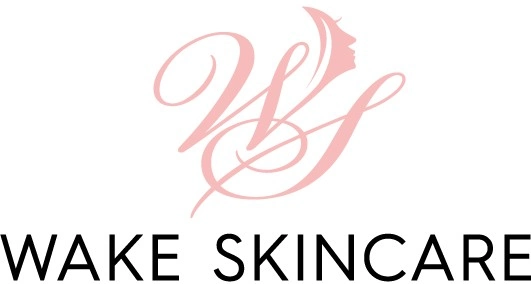Summary:
Chemical peel healing timeline by depth
Your healing time depends entirely on which type of peel you choose. Light peels work on just the surface layer of skin, while deeper peels penetrate further for more dramatic results.
Light peels cause minimal to no peeling with mild redness, creating a glowing complexion in 1-3 days. Medium peels involve redness and peeling for about 3-7 days, revealing fresh skin underneath. Deep peels require more intense recovery with redness, peeling, and healing for 7-14 days, but deliver transformative results.
Most people are surprised by how manageable light peel recovery actually is. You might notice some tightness the day after treatment, but you can typically return to normal activities immediately.
What to expect during the first week
The first few days after your chemical peel are when most of the visible healing happens. After your chemical peel, you will experience some redness and light aching or tingling. This will subside after a few days, but you must stay out of direct sunlight for a week. Expect to see patches on your skin and prepare for peeling.
Day one typically brings some redness and possible tightness, similar to a mild sunburn. On the second day of healing, your skin will still appear red and may feel dry and tight. Apply moisturizer whenever your skin feels too tight, and wash your face with lukewarm water as we instruct.
The first areas to peel are usually around the nose and mouth, but can begin anywhere. Most people begin peeling on the 3rd or 4th day after treatment. This is when you’ll see the most dramatic changes, and it’s crucial not to pick at the peeling skin.
The peeling process isn’t always dramatic either. It is also possible to not peel at all. If this occurs, you will still benefit from the treatment because the skin has exfoliated microscopically. Don’t worry if you don’t see obvious flaking – your skin is still renewing itself.
By day seven, most light to medium peels have completed their visible healing phase. For light chemical peels, the flaking and peeling should be complete within a week or so. In the days following, the new, healthy, supple skin will begin to grow. Some pinkness or discoloration can last for a month or longer before the skin settles to its new radiance.
Medium and deep peel recovery expectations
Medium and deep peels require more planning and patience, but they deliver more significant improvements for stubborn skin concerns like melasma, deep wrinkles, and acne scarring. Recovery from this type of peel may take a week or more and require some downtime.
Expect some redness, swelling, stinging and flaking of your skin. Swelling may last and/or worsen for 48 hours. Blisters can develop and will break open. Skin will crust and peel off over seven to 14 days. This might sound intense, but remember that this controlled healing process is exactly what creates such dramatic improvements.
Following the chemical peel, the recovery period spans 1-2 weeks, with the most significant peeling typically occurring on days 3 and 4. Following a medium or deep peel, downtime is necessary. In the case of a deep chemical peel, you’ll need to recover at home for a period of 2 to 3 weeks.
The key difference with deeper peels is that you’ll need to plan time away from work and social activities. For most peels, the swelling and redness will subside within a week. By the end of the second week, your skin should start to look and feel normal. However, with medium and deep peels, redness may linger for up to three months.
For medium or deep chemical peels, the swelling should disappear within two weeks, but the redness can remain for up to three months. While this extended healing time requires patience, the results typically justify the investment for people with significant sun damage, deep wrinkles, or stubborn pigmentation issues.
Essential aftercare for optimal healing
Proper aftercare isn’t just recommended – it’s absolutely critical for both your safety and your results. Proper skincare is very important and will speed up healing time, help results last longer, and prevent infection.
The most important rule? Do NOT pick at peeling skin – Let it naturally shed for the best results. This single mistake can lead to scarring, infection, and uneven results that could take months to correct.
Your skin will be more sensitive than usual, requiring gentler care and extra protection from environmental factors like Wake County’s humid summers and variable weather conditions.
Sun protection and moisturizing protocol
Sun protection becomes non-negotiable after a chemical peel, especially in North Carolina’s climate. Avoid sun exposure – Your skin will be extra sensitive. Always wear SPF 30+. Your newly revealed skin lacks the protective buildup of the old surface layer, making it extremely vulnerable to UV damage.
Heat and sun exposure can cause inflammation to the skin. Remember to avoid excessive heat on the treated area and direct sun exposure of any kind, as well as tanning beds and self-tanners to the planned treatment areas for 4 weeks after treatment. This means no beach days, outdoor workouts, or even sitting by sunny windows without protection.
When you’re not able to stick to the shady spots when out and about, compensate with a sunscreen with an SPF of 30+ to shield your skin from dangerous UV rays. Use it for a minimum of 6 weeks post-peel.
Moisturizing becomes equally critical. Keep skin moisturized – Hydration is key for healing. Letting the skin dry out may cause discomfort. For strong peels, you may use petroleum jelly for the first few days or as needed on sensitive areas that are peeling. When you start to peel, use a non-comedogenic moisturizer such as Aveeno, Vanicream, Cetaphil, or CeraVe, until the skin feels back to normal. This will promote the healing process by locking in moisture and reducing the chance of a bacterial infection, redness, and irritation.
Apply moisturizer whenever your skin feels tight or uncomfortable. Your skin will feel dry and tight after a peel. Apply a gentle, hydrating moisturizer approved by your skincare professional whenever your skin feels tight. This helps to soothe and protect your new skin.
Products and activities to avoid during healing
What you don’t use on your skin during healing is just as important as what you do use. Do NOT use any acidic products such as retinoids or tretinoins, acne medication products such as Retin-A, Tazorac, Renova, Atralin, Ziana, Veltin, Differin, the antibiotic Doxycycline, AHAs (lactic, glycolic, tartaric, etc.), BHAs (salicylic), benzoyl peroxide, vitamin C products, lightening agents such as hydroquinone or any exfoliative products including loofahs or coarse sponges to your skin for 2 weeks after your chemical peel, or more if you notice your skin becomes sensitive to application. These medications and products increase your photosensitivity, which can significantly increase the likelihood of complications.
For the first 1-2 weeks, you should not use any makeup. Chemicals and other substances in cosmetics can unnecessarily irritate the skin and prolong the healing process. The body’s natural healing process is the reason chemical peels are so effective at improving skin’s appearance, so it’s essential to allow your skin to heal after treatment.
Physical activity requires special consideration too. Sweating excessively after treatment can irritate the skin or cause blistering due to the sweat being unable to escape through the top layer of dead skin. Try to avoid sweating until after you have stopped peeling to avoid lifting the skin prematurely, as this can cause scarring.
Avoid strenuous activities and sweating for the first couple of weeks. This means postponing intense workouts, hot yoga, saunas, and steam rooms until your skin has fully healed.
Gentle cleansing becomes the new standard. Use gentle cleansers – Avoid harsh products until fully healed. After the first day, you should start washing your face in the morning and evening, using cool water and a gentle cleanser. Skip anything with fragrance, alcohol, or exfoliating particles.
Planning your chemical peel recovery successfully
Chemical peel healing doesn’t have to be complicated when you understand the timeline and follow proper aftercare. Light peels offer minimal downtime with maximum convenience, while deeper peels require more planning but deliver more dramatic results.
Typically, you will take 1-2 weeks to heal fully from a chemical peel. The key is choosing the right depth for your skin concerns, lifestyle, and timeline, then committing to the aftercare that protects your investment.
Remember that your healing timeline is unique to your skin type, the peel depth, and how well you follow aftercare instructions. When you work with experienced professionals who provide detailed guidance and support throughout your recovery, you’re setting yourself up for the best possible results. Our award-winning team has guided countless clients through successful chemical peel recoveries, ensuring both safety and beautiful outcomes.





